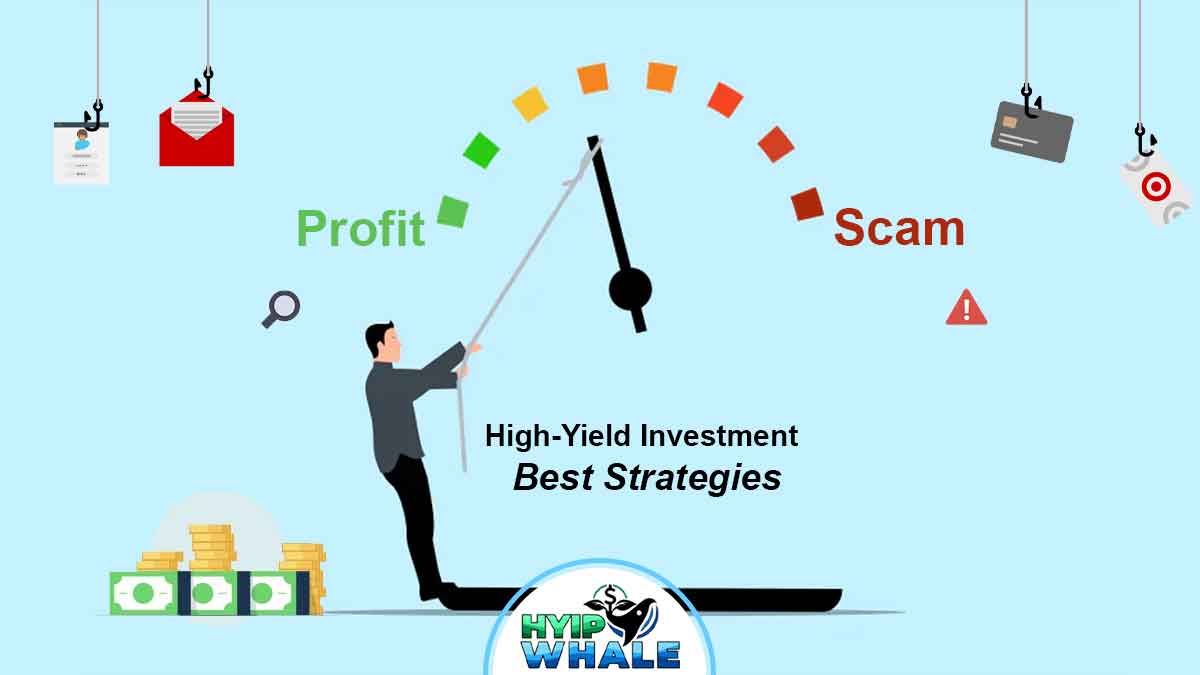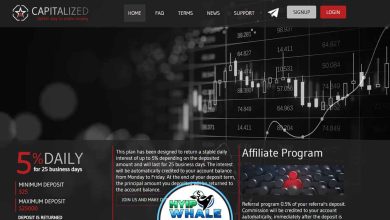
High-Yield Investment Strategies refer to a collection of trading and investment approaches primarily aimed at achieving the maximum possible profit (Maximum Profit) within a specific timeframe. These strategies are often employed in volatile environments, such as futures markets, high-leverage trading, or platforms that promise exceptional returns (like HYIPs).
While these strategies are designed based on careful market analysis and risk management to reduce the probability of loss (Risk Reduction), there is a crucial point every investor must accept: nothing is 100% guaranteed in investment. Especially in high-risk, high-return environments, uncertainty is an unavoidable reality.
These strategies are merely tools designed to improve your chances of success, but they cannot eliminate the inherently volatile and unpredictable nature of the market. Successfully executing these approaches requires discipline, awareness of the risks involved, and the acceptance that the potential for loss always exists.
❌ Disclaimer: This explanation is for educational purposes only. Investing in high-risk markets, and particularly platforms promising unrealistic returns (like High-Yield Investment), can lead to the complete loss of capital. Always conduct thorough research before taking any action.
✅ The “Principal Withdrawal” Strategy for HYIPs Explained
The “Principal Withdrawal” Strategy is a high-risk approach utilized by investors who opt to participate in High-Yield Investment Programs (HYIPs). The primary objective of this method is to protect the investor’s initial capital from the eventual failure of the underlying Ponzi scheme. By focusing on rapid recovery of the principal, the investor attempts to isolate their core funds from the inevitable collapse of the fraudulent platform.
How the Strategy Works (The Steps)
The entire strategy is centered around reaching the break-even point and immediately removing the initial investment.
- Initial, Minimal Investment:
- You invest the smallest amount you are willing to lose in the HYIP. (Crucially, never invest money you can’t afford to lose completely).
- You select the shortest-term plan available that promises daily or hourly returns.
- Tracking the Break-Even Point:
- You meticulously track your daily returns and calculate how many days it will take for your accumulated profit to equal your original principal amount (the point where you break even).
- Example: If you invest $100 and the promised return is 10% daily, your break-even point is after 10 days of successful withdrawal (10 days x $10/day = $100).
- The Critical Withdrawal:
- The moment your accumulated profits equal your initial investment (e.g., after 10 days, you have $100 in profit):
- You immediately initiate a withdrawal for the entire profit amount (the $100).
- Goal Achieved: Your original capital has been recovered. Any money remaining in the HYIP is now profit (or money earned from other users, given the Ponzi nature).
- The moment your accumulated profits equal your initial investment (e.g., after 10 days, you have $100 in profit):
- Continuing with “House Money”:
- You allow the original investment plan to continue. Any subsequent profits generated are theoretically risk-free, as they are not tied to your own personal capital.
✅ Explanation of the “Escalating the Base Plan” Strategy for HYIPs
The strategy is an extremely high-risk approach that investors utilize for engaging with High-Yield Investment Programs (HYIPs). It is based on repetition and incrementally increasing the investment amount within the lowest-risk plan (typically the initial plan with the lowest return rate).
How This Strategy is Implemented (The Steps)
- Initial Entry with Minimum Capital:
- The investor purchases the site’s initial plan with the smallest possible amount of capital.
- Goal: To successfully test the deposit process and, more importantly, successfully withdraw the first small profit.
- Repetition and Incremental Increase (The Escalation Phase):
- After each successful profit withdrawal, the investor decides to renew the base plan, but this time with a larger amount of capital than the previous time.
- Example: If the first top-up was $100, the next renewal might be $110, and the one after that $120.
- The Logic: The investor attempts to increase their daily return by escalating the amount, while remaining within the “safe zone” of the base plan, which often draws less scrutiny from the scam operators for potential blocking.
- Risk Management via Principal Recovery:
- Like other HYIP strategies, the most critical point is when the total accumulated withdrawals cover the initial total capital invested.
- Ultimate Goal: To continue renewing the plan with increasing amounts until the system suddenly shuts down, hoping that the total profits earned outweigh the cumulative amount lost in the final collapse.
✅ The “Escalating Risk and Decreasing Renewal” HYIP Strategy Explained
The method is an extremely high-risk strategy that investors utilize with the intention of accelerating returns from High-Yield Investment Programs (HYIPs). This approach involves progressively increasing the investment amounts in the higher-tier HYIP plans, while simultaneously attempting to reduce the total duration of capital exposure to the platform’s inevitable collapse. The core goal of the strategy is to maximize profit generation before the scheme fails.
How This Risky Strategy Is Executed (The Steps)
- Initial Low-Risk Entry and Testing (Phase 1):
- Focus on the Minimum Plan: Initially, you only purchase the plan with the smallest required investment (e.g., Plan 1).
- Repetition: You renew this low-tier plan multiple times consecutively. The goal here is to test the site’s withdrawal functionality, build confidence in the system’s short-term operation, and work toward the break-even point (recovering your principal).
- The Step-Up Phase (Escalation):
- Once you have successfully withdrawn your initial principal (as explained in the previous strategy) and have gained some “confidence,” you enter the escalation phase.
- Buying the Higher Plan: Instead of renewing Plan 1, you now use your profits (and potentially new capital) to purchase a higher-tier plan (e.g., Plan 2), which typically promises a much greater profit in a shorter timeframe.
- Goal: To maximize the daily profit rate as quickly as possible.
- Reducing Renewal Cycles (Risk Management Attempt):
- As daily profits increase due to the higher plan, you deliberately decrease the number of times you renew the plan.
- The Logic: The less time your capital is tied up in the unstable system, the lower the probability the site will scam while your large investment is active.
- Ultimate Aim: Extract significant profits quickly and exit the entire platform before the inevitable collapse.
✅ Explanation of the “Maximum Profit Plan” Strategy
The strategy you are describing is one of the highest-risk and most aggressive approaches used when investing in High-Yield Investment Programs (HYIPs). This method is based on the fundamental assumption that Ponzi schemes are most stable and capable of paying out during their initial days of operation.
This strategy is often referred to as the “Blitz Attack” or “Golden Ticket” and relies entirely on luck and precise timing.
How the Maximum Profit Plan Strategy is Executed (The Steps)
- Targeting Newly Launched Sites (New HYIPs Only):
- The investor exclusively seeks out HYIPs that have been launched today or within the last 24 hours.
- The Logic: The chance of survival for a Ponzi scheme is highest in its initial hours, before it accumulates a large user base and its financial obligations balloon.
- Selecting the Maximum Profit Plan:
- Instead of choosing basic or mid-range plans, the investor directly purchases the most expensive and highest-yielding plan (e.g., the VIP plan promising several hundred percent returns in a short period).
- The Logic: High-yield plans typically have the shortest Break-Even Point. The goal is to maximize profit gain in the quickest time possible.
- One-Time Execution with Immediate Exit:
- This plan is purchased only for a single cycle. As soon as the cycle ends and the profit (or profit plus principal) is received, the investor immediately and permanently exits the platform.
- No Renewal: This eliminates the risk of further exposure to the failing site.
Final Conclusion and Risk Management in HYIPs
In concluding the review of these strategies, it must be emphasized that methods like “Principal Withdrawal” and “Escalating Capital in the Base Plan” represent a calculated attempt by investors to critically reduce financial risk within extremely high-risk environments.
While using these tactics and money management approaches does not bring the risk to zero, when executed with strict discipline and precision, they can significantly decrease the probability of losing the entirety of one’s personal capital and increase the chances of earning more profit compared to investing without a strategy. Success in this high-stakes game is intensely dependent on the ability to precisely time withdrawals and strictly adhere to the strategy’s rules.
Crucial Point: We reiterate that these strategies are merely survival techniques within a Ponzi scheme and do not change the fundamentally fraudulent nature of HYIP platforms.
💬 Invitation to Share Experiences:
Do you utilize a specific method or trick for managing risk and maximizing profit in high-yield platforms (HYIPs)?
Please share your unique experiences and strategies in the comments section below so that the community of traders can benefit from collective knowledge for more informed decision-making.




